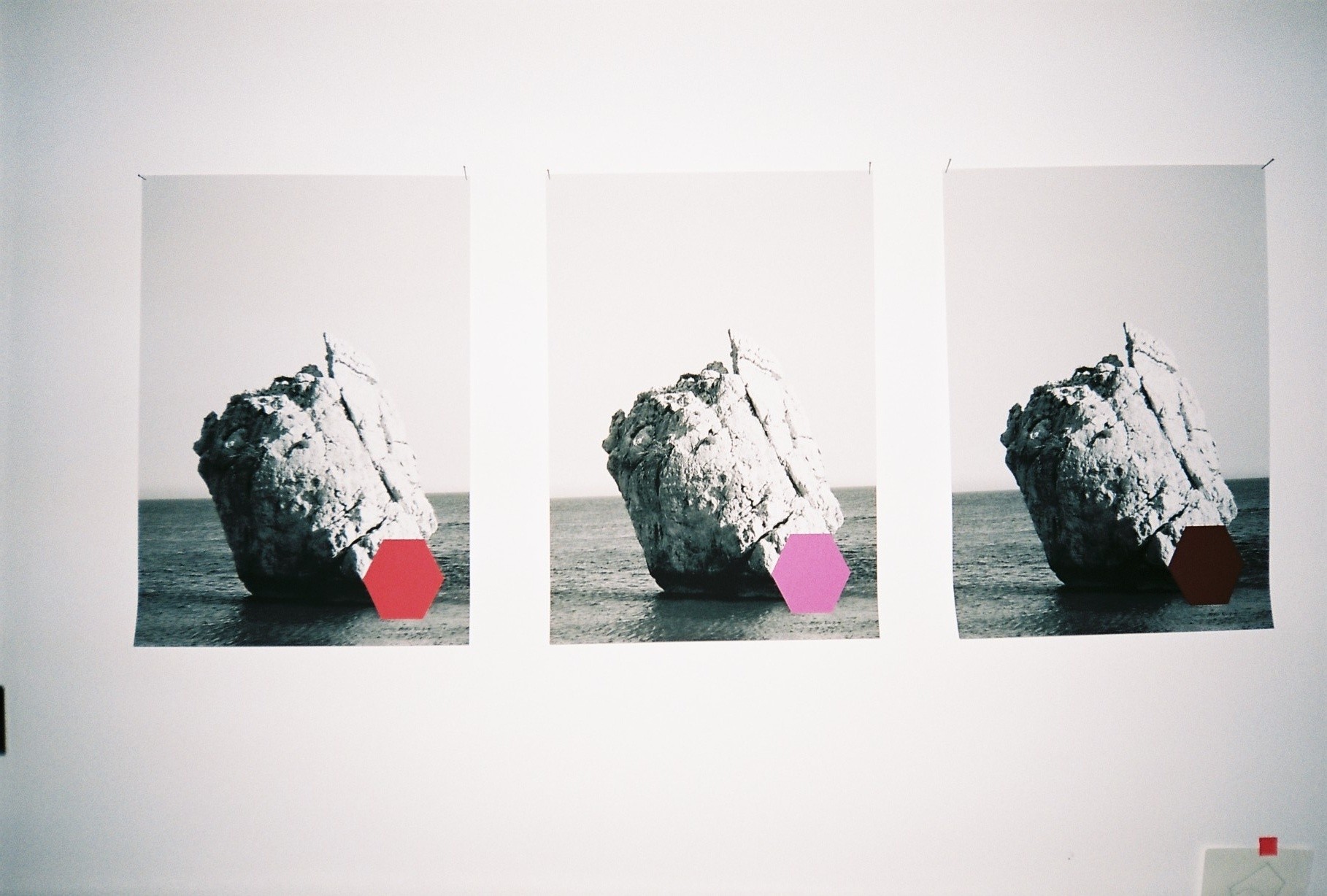










Cohabiting

To view a painting by Freya Douglas-Morris is to enter a landscape – one that is neither geographically specific nor recalled in mimetic detail, but evocative, half-remembered. There is a feeling of stillness and calm, as if the image is held suspended in the balance created by the artist’s almost-paradoxically dynamic exploration of colour, form and process.
These landscapes, which often feature water, hills or forests, are inhabited by vegetation. Familiar and yet non-specific, the plants and trees are vaguely tropical. The colours are unexpected but harmonious: a blue leaf overlays a purple trunk, while palm branches sprout red and ochre fronds. There is a beautiful tension at play that half-resolves itself into a world of childhood memory, with all its attendant oxymorons, doublings and impossibilities.


As well as hosting plants and occasionally animals – fairytale-like deer, a saddled horse – these memory-landscapes are always peopled. Many of the canvases depict couples: floating in an opaque pool, walking companionably side-by-side, embracing on a balcony. Other works depict a family in floral swimwear; a woman reclining beneath a tree; and a girl giving a solo gymnastics display. All the depicted relationships – between lovers, friends or family, and even with the self – are deeply intimate.
This intimacy is achieved even though these paintings never tell the stories of their subjects. Narratives are hinted at, relationships are explored, but nothing is ever fully divulged or specified. The figures are inseparable from the landscapes in which they exist, suggesting a much-looked-for harmony between people and nature.

Like a place once visited, these paintings are inscribed with memory, with its inaccuracies and fillings-in. The anonymity evoked allows each viewer to have an intimate relationship with the painting itself, a unique point of connection. Meaning is passed fluidly between viewer and image, each permeating the other.


Since the birth of her first child, Freya Douglas-Morris has worked by making preliminary watercolour sketches on paper. With a studio in her home and the inevitable distractions of cohabiting, the swifter mode of working offered by this medium allows her to flesh out full compositions in a short period of time. She then scales up her imagery for the canvas, sometimes making major changes to the composition or colours, and sometimes staying closer to the original. This helps her to avoid overworking the final piece, keeping the colours vibrant and freshly immediate.


The same time period has also seen her experimenting with new techniques for working with oils. She has eventually landed on a process where she is able to apply a very thin layer of paint to the canvas, allowing the pigment to seep into the fabric, permeating it like water. Rather than sitting on top like a protective coating, the paint becomes part of the fabric of the work as a physical object, not simply as a superimposed image.


This interpenetration of paint and support could almost be seen as a parallel to the porous interaction between viewer and artwork already described, a fluidly reciprocal relationship. This mode of permeable harmony echoes the aspirational peaceful co-existence between humans and the natural world suggested by Douglas-Morris’ memory-landscapes. People are found living at ease with the environment, in balance with bodies of water, stretches of desert and backdrops of leaves.
In one painting, two small figures, non-specifically gendered, walk hand-in-hand through a forest of impossibly tall, fantastically coloured trees: although they are engrossed in each other, they remain part of their landscape, existing side-by-side with other living things, peacefully cohabiting the earth.

Freya Douglas-Morris: The Sun Long Night is at Lychee One until 27 April 2019
10.04.19
Words by Anna Souter
Related
Journal


